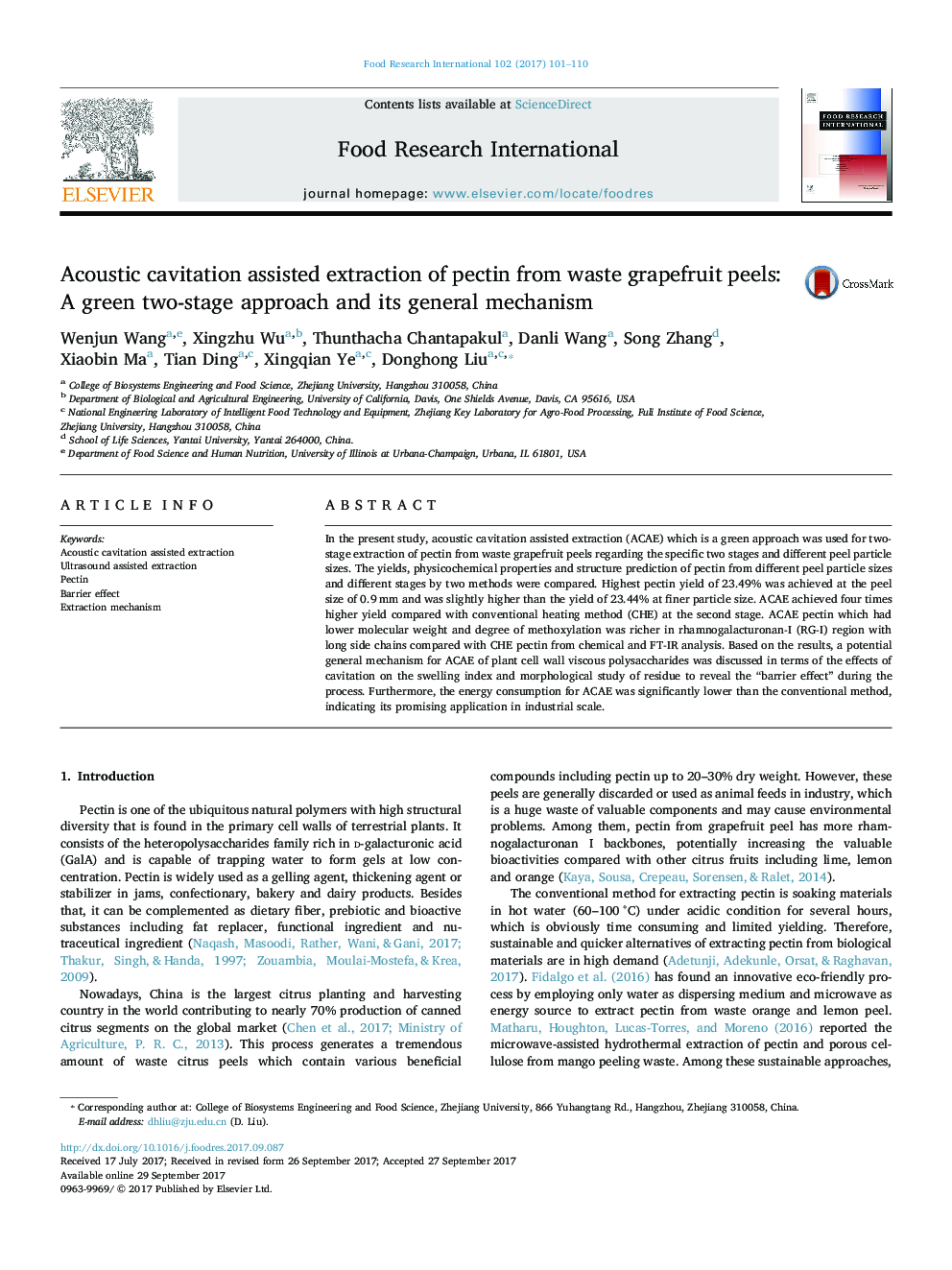| Article ID | Journal | Published Year | Pages | File Type |
|---|---|---|---|---|
| 5767767 | Food Research International | 2017 | 10 Pages |
â¢Two-stage ACAE was applied to extract pectin from waste grapefruit peels.â¢ACAE achieved four times higher yield compared with CHE at the second stage.â¢Properties and molecular structures of pectin were compared between two methods.⢓Barrier effect” was revealed to explain the extraction mechanism.â¢ACAE showed lower energy consumption than conventional method.
In the present study, acoustic cavitation assisted extraction (ACAE) which is a green approach was used for two-stage extraction of pectin from waste grapefruit peels regarding the specific two stages and different peel particle sizes. The yields, physicochemical properties and structure prediction of pectin from different peel particle sizes and different stages by two methods were compared. Highest pectin yield of 23.49% was achieved at the peel size of 0.9Â mm and was slightly higher than the yield of 23.44% at finer particle size. ACAE achieved four times higher yield compared with conventional heating method (CHE) at the second stage. ACAE pectin which had lower molecular weight and degree of methoxylation was richer in rhamnogalacturonan-I (RG-I) region with long side chains compared with CHE pectin from chemical and FT-IR analysis. Based on the results, a potential general mechanism for ACAE of plant cell wall viscous polysaccharides was discussed in terms of the effects of cavitation on the swelling index and morphological study of residue to reveal the “barrier effect” during the process. Furthermore, the energy consumption for ACAE was significantly lower than the conventional method, indicating its promising application in industrial scale.
Graphical abstractDownload high-res image (307KB)Download full-size image
